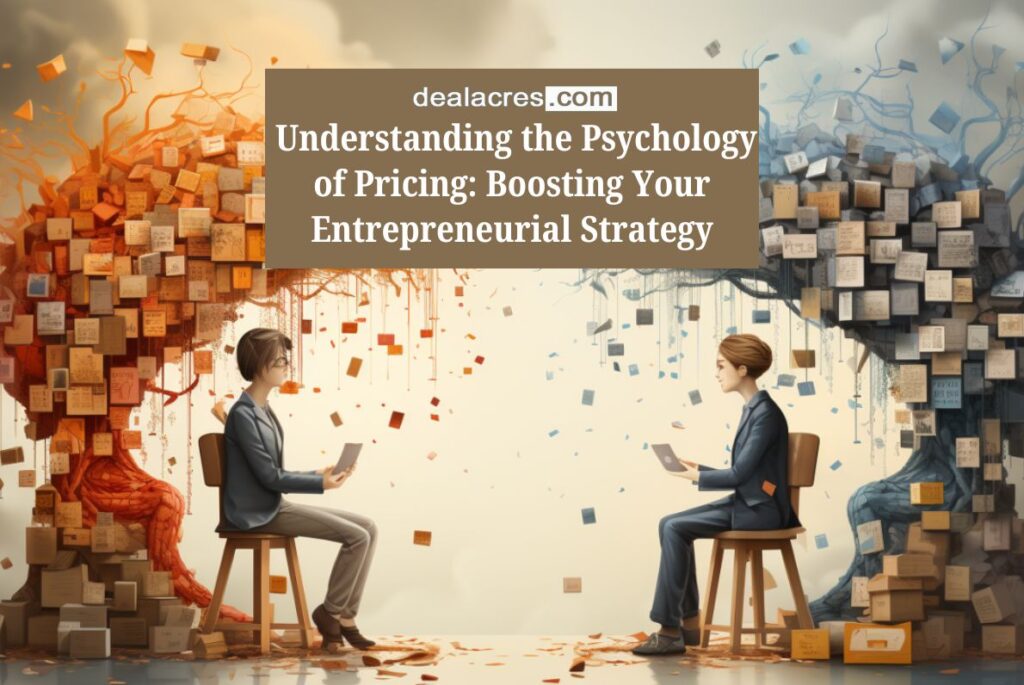Introduction:
As an entrepreneur, setting the right price for your products or services is crucial for success. But have you ever considered the psychology behind pricing? Understanding how consumers perceive prices can significantly impact your sales and profitability. In this article, we’ll delve into the fascinating world of the psychology of pricing and explore strategies that entrepreneurs can use to leverage this knowledge effectively.

What is the Psychology of Pricing?
The psychology of pricing refers to the study of how consumers perceive and react to different price points. It’s not just about numbers; it’s about understanding the emotional and psychological factors that influence purchasing decisions. By tapping into these factors, entrepreneurs can optimize their pricing strategies to attract more customers and increase sales.

Pricing Strategies
- Anchoring: One powerful concept in the psychology of pricing is anchoring. This involves presenting a higher-priced option first to make subsequent options seem more reasonable. For example, offering a premium package alongside basic and intermediate options can make the latter appear more affordable in comparison. This technique takes advantage of the anchoring bias, where people rely heavily on the first piece of information they receive when making decisions.
- Loss Aversion: Loss aversion is another key principle to consider when pricing your products or services. This psychological bias suggests that people are more sensitive to losses than gains. As such, framing your pricing in terms of what customers stand to lose by not purchasing can be more compelling than emphasizing the benefits alone. For instance, highlighting the potential savings or exclusive benefits of a limited-time offer can trigger the fear of missing out (FOMO) and prompt quicker buying decisions.
- Perceived Value: The perceived value of your offering plays a significant role in determining how much customers are willing to pay. Even if your production costs are relatively low, positioning your product as high-quality or exclusive can justify higher prices in the minds of consumers. This is why branding, packaging, and customer experience are essential components of your overall pricing strategy. By enhancing perceived value, you can command higher prices and cultivate a loyal customer base.
- Scarcity and Urgency: Creating a sense of scarcity and urgency can also influence purchasing behavior. Limited-time promotions, flash sales, and exclusive offers tap into people’s fear of missing out and drive them to act quickly. By highlighting that supplies are limited or that the offer will expire soon, you can motivate customers to make a purchase sooner rather than later. However, it’s essential to strike a balance and avoid overusing this tactic, as it can lead to consumer fatigue if used excessively.
- Price Priming: Price priming involves subtly influencing customers’ perceptions of value by exposing them to certain price points beforehand. For example, displaying a higher-priced item before introducing your target product can make the latter seem more affordable by comparison. Similarly, offering a discounted price after initially stating a higher price can create a sense of perceived value. By strategically priming customers with pricing cues, you can guide their decision-making process in your favor.
- Social Proof: Humans are social creatures, and we often look to others for guidance, especially in uncertain situations like purchasing decisions. Incorporating social proof into your pricing strategy can help build trust and credibility with potential customers. Testimonials, reviews, and endorsements from satisfied customers can reassure prospects that they’re making the right choice by buying from you. Additionally, showcasing the popularity or widespread adoption of your product or service can create a bandwagon effect, where people are more inclined to follow the crowd.
- Flexible Pricing: Offering flexible pricing options can cater to different segments of your target market and increase your overall sales volume. This could involve tiered pricing based on features or usage levels, subscription models, or pay-what-you-want schemes. By giving customers the freedom to choose the pricing plan that best suits their needs and budget, you can appeal to a broader audience and maximize revenue. However, it’s essential to strike a balance between flexibility and profitability to ensure that your pricing structure remains sustainable.

Conclusion:
In conclusion, understanding the psychology of pricing is essential for entrepreneurs looking to optimize their pricing strategies and drive sales. By leveraging principles such as anchoring, loss aversion, perceived value, scarcity, price priming, social proof, and flexible pricing, you can influence consumer behavior and improve your bottom line. Remember to experiment with different approaches and monitor the results to fine-tune your pricing strategy over time. Ultimately, by aligning your prices with the psychological factors that drive purchasing decisions, you can enhance your competitiveness and profitability in the marketplace.




